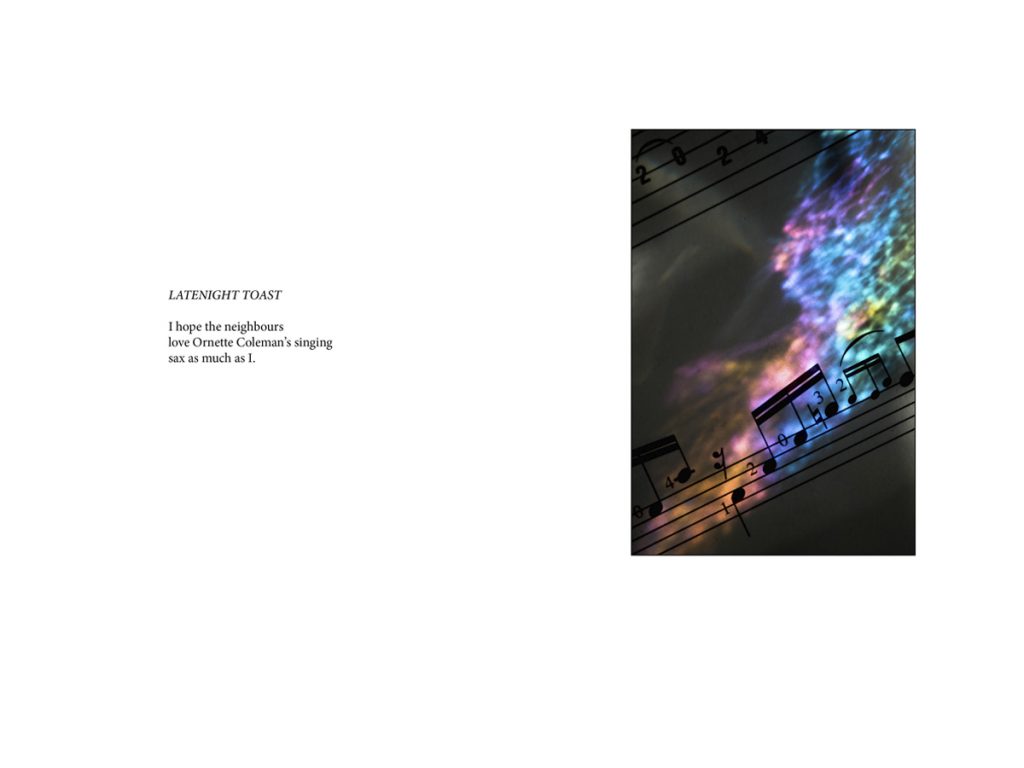This Ornette Coleman Haiku image was a lovely coincidence. One morning the light was refracting through a glass candle on some music I was working on. This haiku can be found in our book Light Wounds.
The relationship of music, photography and colour has always intrigued me. As a young photographer I was captivated and influenced by Stieglitz’s ideas of Equivalents. The notion that photographs could have a meaning other than the subject matter of the image is a challenging and an expansive concept. Stieglitz photographed clouds because that is where he saw and felt music. Critics might consider this far fetched, but he did claim to show his cloud photos to the composer Ernest Bloch who exclaimed he experienced what Stieglitz had set out to accomplish.
Another relationship between music and photography has to do with form. Music is built on small ideas that are threaded together into a greater whole. Likewise, I need to structure photographs into a sequential form. The images begin to play off of each other and ideas and photographic thoughts begin to emerge. It is like stringing together bars of music.
The most elusive parallel with colour and music is how it feels. Sound and colour when photographed or performed can stir a range of emotional responses, unique specifically to the perceiver. This photograph is the closest I have come to bringing visual form to sound.
I have The Shape of Jazz to Come by Ornette Coleman and had listened to the album when I was a student. I admit I had a hard time with his sound at the time and I filed the album away. When I read Eva’s poem I knew the photograph would be a perfect match for the Ornette Coleman Haiku. And more importantly, her poem made me revisit the Shape of Jazz to Come.

